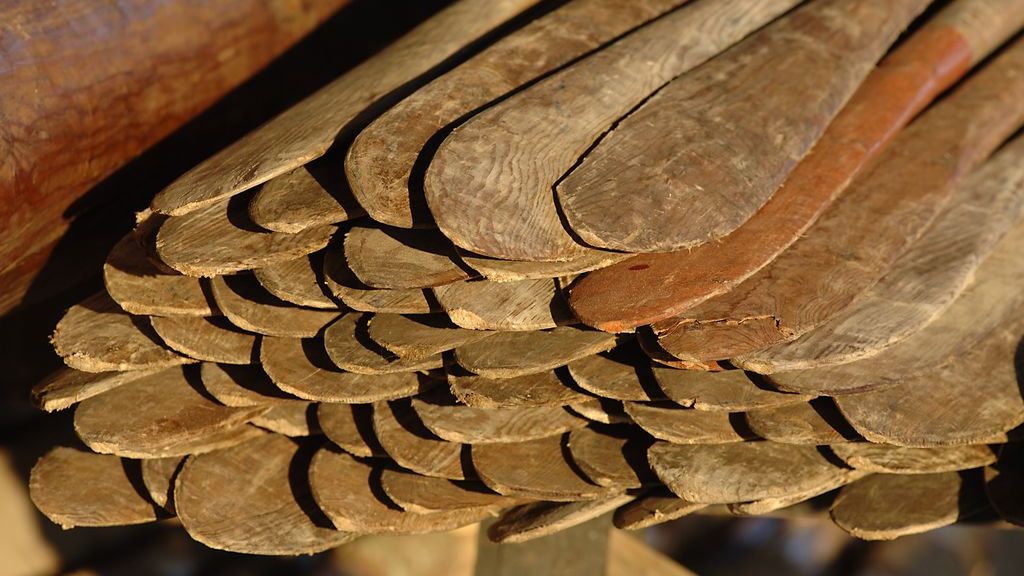Almost 1,000 years ago, during the Viking Age, an open boat just 12m long completed an impressive journey from Sognefjord in West Norway to Roskilde Fjord.
A journey of a total of 775 nautical miles in a boat that was not built for long haul sailing on the open sea, but most likely was intended for life as a fishing boat.
Why the ship ended its days so far from its construction site, is impossible to know. But one thing is certain: the boat, with its crew, completed the long, hard sailing – and during the next weeks, a group of volunteer Viking ship sailors will repeat the feat.
Nordic Clinker Boat traditions on UNESCO's representative list of the Intangible Cultural heritage of Mankind
The ships from the Viking Age have left their traces in Scandinavian maritime culture. Today's wooden boats are still built using the same methods as in the Viking Age. The construction method is called clinker-building, and there are still people in the Nordic region who build wooden boats using this technique which is more than 1,000 years old.
This living, intangible cultural heritage is under threat. In the spring of 2019, Denmark and the other Nordic countries sent a joint Nordic application to UNESCO, seeking recognition of the craft practices and activities associated with the Nordic, clinker-built boat as being inalienable world cultural heritage.
In the spring of 2019, Denmark and the other Nordic countries sent a joint Nordic application to UNESCO in order to recognize the crafts and the activities around the Nordic clinker-built boats, as intangible world heritage.
A boat with a mission
Skjoldungen’s trial voyage shall add new knowledge about coastal sailing in the Viking Age and put a spotlight on the joint Nordic application to have nominated Nordic Klink boat traditions on the Unesco representative list of the Intangible Cultural heritage of mankind.
The Skjoldungen is a unique representative and ambassador for this common Nordic cultural heritage.
The trial voyage will take place along the Norwegian, Swedish and Danish coasts, where there are still milieu working to maintain the Nordic clinker-building traditions.
The voyage will thus help to highlight our vibrant maritime culture, which has its roots all the way back in the Viking Age.
The voyage is carried out exclusively using sail and oars, just like in the Viking Age.
Facts about the Skjoldungen/Skuldelev 6
Skjoldungen, which was built at the Viking Ship Museum's boatyard in 2010-12, is a reconstruction of the archaeological ship-find, Skuldelev 6.
The ship Skuldelev 6 is exhibited at the Viking Ship Museum and was found in connection with archaeological excavations in Roskilde Fjord at Skuldelev in 1962.
Studies of the shipwreck have shown that the boat was originally built in the Sognefjord area in West Norway around the year 1030. As the ship was found in Roskilde Fjord, it is quite certain that the boat sailed from Sognefjord to Roskilde Fjord during the Viking Age.
Testing at sea
Skjoldungen’s trial voyage offers a unique opportunity to explore various aspects of Viking Age seafaring.
The combination of a scientific reconstruction of a Viking ship, and the 21st century digital technology gives the crew the opportunity to document the journey's sailing times and distances for sail and oars, in terms of wind, tides, etc. in physical logbooks and diaries and with an electronic log, which automatically tracks Skjoldungen’s route.
The crew will also write down their reflections on the navigational possibilities available to the Vikings and the sailing conditions and travel conditions that the original Skuldelev 6 and its crew faced on the coastal sailing from the Sognefjord to Roskilde Fjord.
Use and wear of wool sails, bast ropes, skin ropes, etc. will also be documented along the way.
The documentation and the crew’s reflections are intended to contribute to the museum's future research on the Viking Age seafaring and maritime culture.
The documentation and the crew's reflections must contribute to the museum's future research in the Viking Age's maritime and maritime culture.
Facts about the Voyage
• The Viking ship was transported by cargo ship to Høyanger, which is approximately 85 kilometres from the estuary of Sognefjord. From Høyanger, the voyage will continue along the coastlines of Norway, Sweden and Denmark on the way to Roskilde. The voyage is carried out in appropriate stages, as long as the weather is favourable.
• The total distance of the voyage is approximately 775 nautical miles, which can be assumed to be sailed over about 30 days of sailing.
• Safe sailing is dependent on favourable weather conditions along the way, and the crew’s condition and energy levels also affect the length and duration of each stage. It is planned that Skjoldungen should return to Viking Ship Museum in Roskilde on Saturday 17th August.
• The crew consists of a total of 18 people, which are divided into 6 teams along the way, manning Skjoldungen with up to eight crew members at a time.
Skjoldungen's sailing 2019 is supported by:
Crown Prince Frederick and Crown Princess Mary's Foundation
Consul George Jorck and Wife Emma Jorck's Foundation
Ernst B. Sund Foundation



